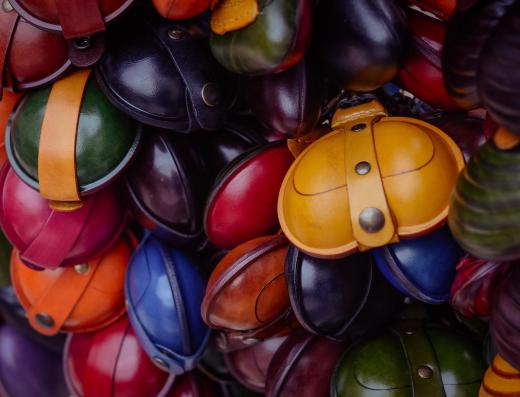What are the Properties of Chromium?
Chromium is an element named for its property of displaying colors. The element is what gives color to many different items, from emeralds to leather dyes, and it exists in nature as an ore called chromite. Properties of chromium include durability and a resistance to corrosion.
At room temperature, chromium is a solid. The ore has a melting point of 3,465°F (about 1,907°C), and boils at 4,840°F (about 2,671°C). With 24 protons in the nucleus of each atom of chromium, the atomic number is 24. Chromium belongs to a group of elements that exist in nature as metals; this transition metal is commonly used in the formation of other types of metals and substances. Alone, it is a very brittle metal that can be easily broken.

One of the properties of chromium is its strength in forming alloys. It is also often used in surface finishes, as it can be shined to a bright, reflective, metallic blue-white. As it is resistant to rust and other types of corrosive damage, it is often used to cover more delicate metals and alloys. Stainless steel and armor plating are typically made with an alloy that involves a chromium finish, as it can also be easily bonded to another material.
When chromium was first discovered, it was the color that caught the eye of scientists. Isolated from small amounts of Siberian red lead, it was later found that when chromium ore was subjected to different reactions, it produced different colors. It is now used as an element in many types of dyes and paints, and can be combined to create colors from yellow to black. The red lead that it was first discovered in has long been used as a dye pigment for paints. Scientists have also identified the properties of chromium that give rubies their distinctive red color, as well as the green of emeralds.
The ore forms chromium oxide when exposed to oxygen and can be made to react with aluminum to form the more desirable metallic form of the element. One of the properties of chromium is that it will react with almost all acids; it is these reactions that create the form used for coating other metals and for adding colors to other compounds. Chromium metal is not as reactive as the oxide form, making it an ideal material for surfacing.
Chromium also has seven different isotopes, which means it exists with seven different masses. There are varied uses for these different isotopes, including medical research. One of the properties of chromium-51 is a mild radioactivity safe for use in the human body; it is often used to study how blood flows through the body and the life cycle of individual cells. In fact, small amount of chromium occurs naturally in the body, where it helps process nutrients.
AS FEATURED ON:
AS FEATURED ON:











Discuss this Article
Post your comments